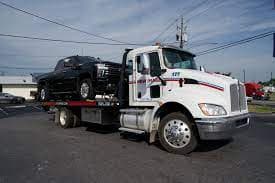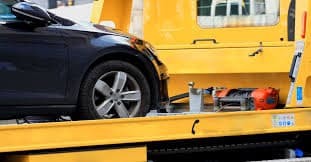Essential Roadside Emergency Kit: Must-Have Items for Every Driver
Every driver should be prepared for unexpected roadside emergencies. Whether you're dealing with a flat tire, a dead battery, or severe weather conditions, having a well-stocked roadside emergency kit can make all the difference in ensuring your safety and getting back on the road quickly. In this guide, we will cover the must-have items that every driver should keep in their vehicle to handle common roadside emergencies.
Why You Need a Roadside Emergency Kit
A roadside emergency kit can help you:
- Stay safe during unexpected breakdowns.
- Handle minor repairs and issues without waiting for roadside assistance.
- Remain comfortable while waiting for help.
- Avoid costly towing or repair services for minor problems.
Having the right tools and supplies in your car can provide peace of mind and prevent small problems from turning into dangerous situations.
Must-Have Items for Your Roadside Emergency Kit
1. First Aid Kit
A basic first aid kit is essential in case of injuries. Your kit should include:
- Bandages and gauze pads
- Antiseptic wipes
- Adhesive tape
- Tweezers and scissors
- Pain relievers (such as ibuprofen or aspirin)
- Disposable gloves
- Emergency contact numbers
2. Jumper Cables or a Portable Jump Starter
A dead battery can leave you stranded, but having jumper cables or a portable jump starter can help you get back on the road quickly. A portable jump starter is especially useful if there’s no other vehicle nearby to assist with a jump-start.
3. Tire Repair Kit and Inflator
Flat tires are a common roadside problem. Your kit should include:
- A spare tire (properly inflated)
- A tire jack and lug wrench
- A tire repair kit for minor punctures
- A portable air compressor or tire inflator
4. Flashlight and Extra Batteries
A reliable flashlight is crucial for nighttime emergencies or when checking under the hood. Keep extra batteries on hand to ensure your flashlight works when needed.
5. Reflective Triangles and Road Flares
Making your vehicle visible to other drivers is essential for safety. Use reflective triangles or road flares to warn oncoming traffic and reduce the risk of accidents.
6. Multi-Tool or Basic Toolkit
A multi-tool or a small set of essential tools can help with minor repairs. Consider carrying:
- Screwdrivers (flathead and Phillips)
- Pliers
- Adjustable wrench
- Duct tape
- Utility knife
7. Emergency Blanket and Warm Clothing
If you get stranded in cold weather, an emergency blanket, extra gloves, and warm clothing can help you stay comfortable and prevent hypothermia.
8. Bottled Water and Non-Perishable Snacks
Staying hydrated and having food on hand can be crucial, especially if you're stuck for an extended period. Consider carrying:
- Bottled water
- Granola bars
- Trail mix
- Energy bars
9. Fire Extinguisher
A small, automotive-rated fire extinguisher can help you put out small vehicle fires before they become uncontrollable.
10. Phone Charger and Power Bank
Keeping your phone charged is vital in case you need to call for help. A car charger or portable power bank ensures you have enough battery life to make emergency calls.
11. Rain Poncho and Umbrella
Weather can be unpredictable. Having a rain poncho or umbrella will keep you dry if you need to step outside your vehicle during a breakdown.
12. Tow Rope or Strap
If your vehicle needs to be towed out of a ditch or moved a short distance, a tow rope or strap can be incredibly useful.
13. Windshield Washer Fluid and Ice Scraper
Visibility is key to driving safely. Keep an extra bottle of windshield washer fluid in your car, and if you live in a cold climate, an ice scraper is essential during winter.
14. Spare Fuses
A blown fuse can cause electrical malfunctions in your car. Keeping spare fuses can help you quickly replace one and get back on the road.
How to Organize Your Roadside Emergency Kit
- Store your kit in a durable, waterproof bag or plastic container.
- Keep it in an easily accessible area, such as the trunk or under a seat.
- Regularly check and replace expired or used items.
Additional Tips for Roadside Emergencies
- Stay inside your car if it’s safe. Exiting a vehicle on a busy highway can be dangerous.
- Call for help immediately. If you’re unable to fix the issue, contact roadside assistance or emergency services.
- Stay aware of your surroundings. Be cautious of strangers offering help and always prioritize your safety.
- Perform regular vehicle maintenance. Preventative maintenance can reduce the chances of breakdowns.
Conclusion
A well-stocked roadside emergency kit can be a lifesaver in critical situations. Whether you’re facing a minor inconvenience or a major breakdown, having these essential items can keep you safe and prepared. Make it a priority to assemble your own kit today, and stay ready for any roadside emergency!








